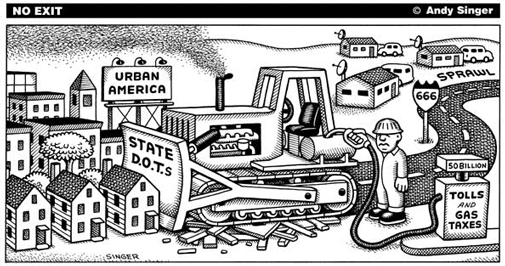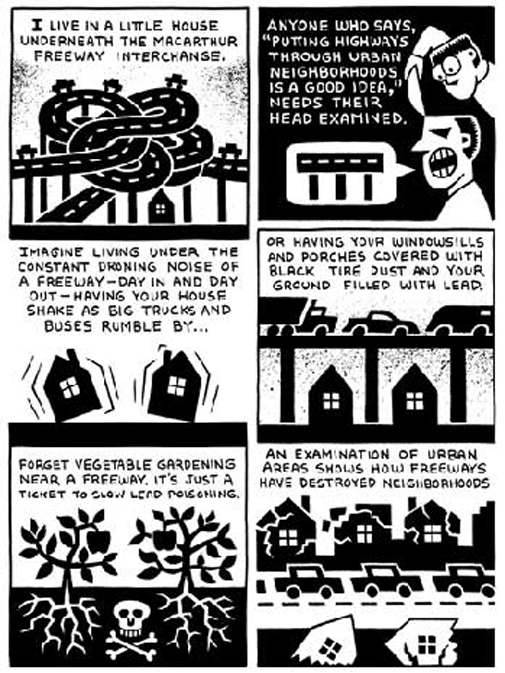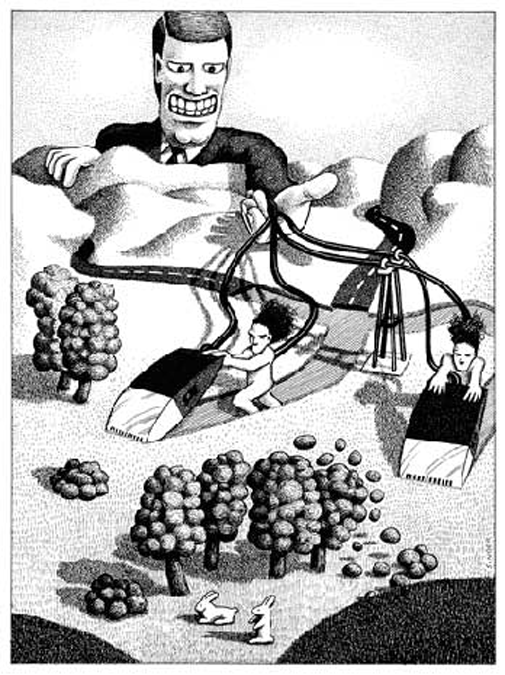
"Soil", an article in this month's National Geographic looks at the world's degradation of agricultural land and the problems associated as are population approaches 9 billion.
This year food shortages, caused in part by the diminishing quantity and quality of the world's soil, have led to riots in Asia, Africa, and Latin America. By 2030, when today's toddlers have toddlers of their own, 8.3 billion people will walk the Earth; to feed them, the UN Food and Agriculture Organization estimates, farmers will have to grow almost 30 percent more grain then they do now. Connoisseurs of human fecklessness will appreciate that even as humankind is ratchetting up its demands on soil, we are destroying it faster than even before. "Taking the long view, we are running out of dirt," says David R. Montgomery, a geologist at the University of Washington in Seattle. Journalists sometimes describe unsexy subjects as MEGO: My eyes glaze over. Alas, soil degradation is the essence of MEGO.
A solution however is at the cusp of conception as scientific researchers unearth greater understanding of the Amazonian superdirt known as Terra Preta.
Terra Preta, or "Black Earth", a black nutrient rich soil discovered in the Amazon in areas not recognized for their plentiful soil. Carbon dating tells us the its age dates back over 2,000 years.
The key ingredient is activated carbon in the charcoal, which was placed in the soil through "slash and smoulder" farming techniques practiced by the ancient Amazonians. Benefits of this carbon rich soil: increased water/nutrient retention, symbiotic relations with mycorrhizal fungi, allowing better nutrient uptake through roots, and the ability for the soil to regenerate itself.
The incredible attribute of Terra Preta, besides its ability to retain nutrients over hundreds of years, is that its actually artificial. Scientists have only found the soil around ancient settlements.
Because of the geographical distinct areas in which the soil was found, researchers have theorized that a dense civilization of networked villages once existed in the Amazon, and appears to show a form of organization that permits density without significant hierarchy.
Here's an alternate mode of organization--a networked "grid," "lattice," or "peer-to-peer" structure of small, minimally self-sufficient villages, or "rhizome" as proposed in my article The Hamlet Economy. The Xingu settlement structure seems consciously model itself in the latter pattern. Heckenberger even notes that each village was surrounded by a buffer zone of "managed parkland," exactly the kind of fall-back, resiliency-enhancing production zone that I recommended for rhizome.
Did this Xingu civilization really develop a dense, ecologically sustainable civilization without hierarchal structure? Or did they simply find a new way to impose hierarchy without developing the signatures of "central places"? Was this a conscious reaction to prior abuses of hierarchy , or simply an expedient to survival in the dense forests and poor agricultural soils of the Amazon? We don't know the answers to these questions at the time, but the research Heckenberger and his colleagues suggests that there is still a great deal for us to learn from the past about how we can best live in the future.
How can we use Terra Preta?
Burning or charring biomass has several benefits. If biochar (remnants after burning biomass) is redistributed back into the soil it replenishes it and maintains nutrient content, higher water/nutrient retention, thus producing higher yields of crops with smaller plots of land using less pesticides. Burning the biomass reduces landfill waste while also providing energy resources, decreasing reliance on fossil fuels. The process is essentially carbon-free, as all carbon produced is returned to the soil and absorbed by planting.
The ability to artificially create nutrient rich soil while simultaneously providing energy and waste reduction has serious global environmental benefits.
Conceptually, regions ravished with poor farming practices which left landscape wastelands of barren soil could be given a "second chance" at providing food for impoverished lands.
Michael Pollan has written extensively about the necessity for a complete overhaul of our food infrastructure. A system created through accessibility to fossil fuels. Government subsidizing produced industrial sized farming encouraging growers to "get big, or get out." These subsidies allowed large monoculture commodities, lowering grain prices which then allowed monocultures of animal farming. So meat and dairy animals migrated from farm to feed lots. The implications of this as Pollan writes permeates through the diet and failings of our current health care system, to farms becoming one of America's biggest sources of pollution. By taking animals off the farm and into feed lots, as Wendell Berry observed, is to take an elegant solution - animals replenishing the fertility that crops deplete - and neatly divide it into two problems: a fertility problem on the farm and a pollution problem on the feedlot. The former problem is remedied with fossil-fuel fertilizer; the latter is remedied not at all.

Our food system also has national security implications. At his valedictory press conference in 2004, Tommy Thompson, the secretary of health and human services, offered a chilling warning, saying, "I, for the life of me, cannot understand why the terrorists have not attacked our food supply, because it is so easy to do."
Pollan stresses the need for sovereign food resources, and the only coherent economically and environmentally way is through an infrastructure of satellite cities each containing local farming production for a majority of their food needs.
It's about reducing the fossil fuel costs associated with our food, increasing the number of smaller, polyculture farms that incorporate animals for soil replenishment, reduction in pesticides and fertilizers due to healthier soils and shorter distribution distances. With each satellite city growing its own, it eradicates reliance on foreign imports, and possibilities of strategic terrorist attacks on food supplies.
Smaller mini-cities, designed with all mixed-use essentials, and assuming residents will also choose to work in the area, drastically reducing fuel consumption. An imperfect example could be Reston VA, if better equipped with high-yielding, Terra Preta based community farms and year-round producing hydroponic greenhouses.
Of course none of this is likely to happen, as Pollan pleads to the next president, unless governmental action is taken to restructure our food system, and city and regional planning officials incorporate community farming systems as design requirements.
Designing these networks of satellite cities, connected by buffer zones of "managed parklands" as did the ancient Amazonians, or "managed farmlands" rather, will preserve landscapes, effectively managing large swaths of areas, instead of completely desecrating industrial farmlands, only to dedicate smaller tracts for pristine preservation.






















